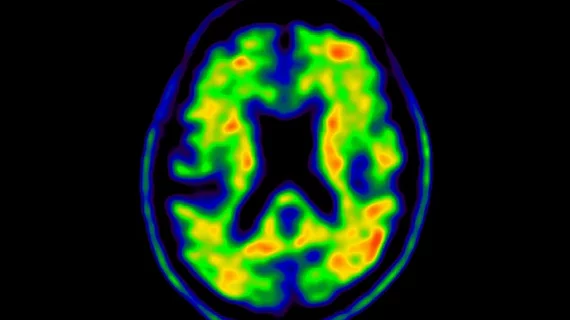Cognitive decline not far behind amyloid and tau PET-positive scans, even for the asymptomatic
PET scans can identify patients who will go on to develop Alzheimer’s disease even before they show signs of cognitive decline.
What’s more, beta-amyloid plaques and tau neurofibrillary tangles —common markers of the disease—visualized on the scans of asymptomatic patients might foreshadow the onset of symptoms in the years following their initial discovery [1].
That’s according to new findings published recently in Nature Medicine. Experts involved in the research suggested that the results of their study are highly relevant clinically, as they may help to determine if cognitive decline associated with Alzheimer’s can be avoided when the disease is caught early.
“A major unanswered question in the dementia field is whether cognitively unimpaired individuals who harbor both Alzheimer’s disease neuropathological hallmarks (that is, amyloid-β plaques and tau neurofibrillary tangles) can preserve their cognition over time or are destined to decline,” first author of the paper Rik Ossenkoppele, senior researcher at Lund University and Amsterdam University Medical Center, and co-authors explained.
For their study, experts analyzed the cases of 1,325 patients who were amyloid PET-positive (A+) and tau PET-positive (T+), but were asymptomatic at the time of their scan. Seeking to predict the risk of future impairment progression in these patients, the experts compared the cognitive assessments and scans completed at the beginning of the study in early 2019 to follow-up data that was collected until April 2022.
Through this, the experts found that patients who were amyloid and tau PET-positive showed substantially increased risks of mild cognitive decline within 3 to 5 years of their initial PET findings. That same group was also reported to face significantly faster decline when compared to a group of amyloid and tau PET-negative individuals.
The experts suggested that their findings indicate that amyloid and tau pathology on PET scans, whether in the presence of AD symptoms or not, is strongly associated with the short-term progression of cognitive impairment.
They added that classifying amyloid and tau PET-positive scans as a just risk factor and not a disease manifestation “may be an underestimation of its malignancy.”
Although the authors acknowledged that there is a need for more work in larger cohorts to determine whether their findings are generalizable, they suggested that, if confirmed, their results could aid in trials testing the efficacy of treatments intended to slow the cognitive decline of AD.
To learn more, click here.

